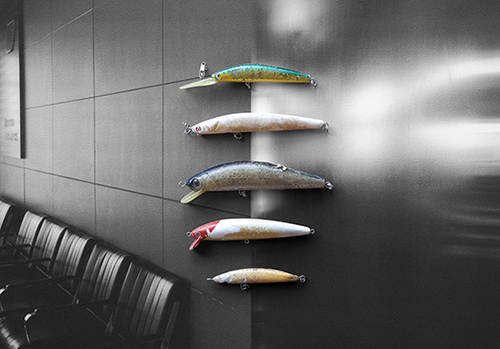
False Food
Soaring above the Pacific Ocean, the albatross is scanning below for her next opportunity to feed. With promising prey in sight, she dives and breaks the ocean’s surface only to acquire a fraudulent meal of discarded plastic. When repeated, this scenario becomes a deadly feast, for the excessive abundance of plastic waste is ‘false food’ to birds and other creatures of the sea, making their struggle for survival even more difficult.
In the case of the albatross, the ingestion of plastic eventually inhibits the ingestion of real food and the bird starves to death. The albatross feeding on false food is a very real example of how humans disrupt the natural order, it is also a metaphor for what may lie in our future. Plastic does not biodegrade like organic debris. It photo-degrades into smaller and smaller particles until there is a soup of molecular plastic. At this size, plastic enters the food chain and ‘we’ become the albatross. To understand ecosystems is to know that our own well-being cannot be distinguished from the well-being of others. What we do to the environment, we do to ourselves. Environmental issues transcend all boundaries.
As our interdependence becomes clear, we are faced with responsibilities of immense magnitude and complexity. As an artist, I feel a responsibility to use my medium to illuminate issues that are important to me. I view this responsibility as an act of citizenship; the outcome of which I hope is an original expression that brings attention, awareness and an understanding of our personal accountability. In this work, I am exploring the illusion of separateness—we do not live in isolation from other beings. We are all connected through the environment. We breathe the same air. Drink the same water. These photographs are not documentary—they are a visual fiction; altering reality to communicate a deeper truth.
Since 1969, I have designed messages for environmental conservation. With the False Food series, I am using the photographic image to bring attention to this issue. It’s a way of taking an overwhelming environmental problem and finding a way to make it personal. Since beginning the project, I have become acutely aware of the abundance of plastic in my life and in my world. The albatross have provided me with a new awareness of the web of life. Creating these images helps me to integrate the tragedy of the situation with a sense of hope—hope that by telling and re-telling the story—observers may be inspired to act, not to turn away. Statistics, information and analysis can present a compelling case for change. I believe art has the power to generate feelings that inspire the desire to change. Integrating feeling with knowledge makes the message whole, guiding us to act accordingly.
False Food photographs may be viewed here.
False Food catalog may be purchased here.
Special thanks to the Monterey Bay Aquarium for generously providing the plastic artifacts used in making these images.
